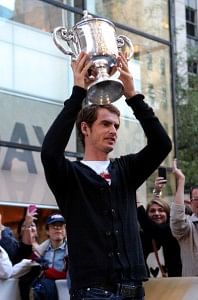
Excellence bequeaths mediocrity

In the world of sports, more so in tennis, close on the heels of every era of brilliance is a spell of mediocrity. We just witnessed one such spell of mediocrity after the glorious years of play from 2006 to 2011.
Though the top seeds of men’s tennis continued their fine run with yet another enthralling performance at the Australian Open 2012 final that lasted a good five hours, the burn out was all but looming large by the end of it. Men’s tennis has, arguably, seen some of the best tennis of all time during the last few years – the sheer class of Federer, the athleticism of Nadal and the shrewdness of the Djokovic. Yet like all good things, their rein had to come to an end, at least temporarily.
The masters fall prey to their own brilliance. Such high intensity tennis over such long spells is just not sustainable, and the fallout is inevitable. While Rafa aced through the French Open with ease that only a few can command, it was indeed uncharacteristic of Djokovic to repeatedly double fault at crucial break points. Nursing an injury, Rafa himself was unavailable for play for the rest of the season. A recharged Federer, coupled with opponents not in the best of form helped the Swiss maestro capture his seventh Wimbledon title. But the final in itself was a pale comparison to the drama that had enfolded at the Centre Court in the previous years.

Squeezed into an already stretched calendar, the Olympics only led to more fatigue, and ended in the great man conceding gold medal without much of a fight. In my mind, there could be only one possible explanation to Federer losing 2–6, 1–6, 4–6 to Andy Murray.
The burnout isn’t just physical; to move in and out of tournaments with the unrelenting focus for years together is a tall order. Therefore, every once in a while there surfaces a phase of ordinary tennis, just so as to remind us that, hard as it may seem, the masters of the game are still mortals.
History has it that almost invariably if an average player hangs in there long enough, the legends wear off and the former are rewarded with a grandslam or two. Amelie Mauresmo winning the Australian Open & the Wimbledon in 2006 is a good example. Blame it on the aging legends, injuries, a tiring tournament calendar or simply a lack of intent.
It is the bane of every golden era that it be followed by a phase of mediocre performances. And since these mediocre performances immediately succeed high quality tennis, it’s often mistaken that the former is an extension of the latter. However, this brief spell only paves way for yet another glorious phase of tennis. Or, so is the hope.